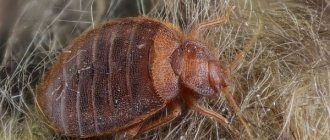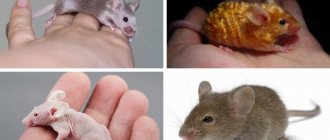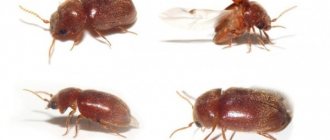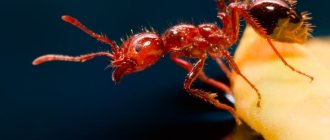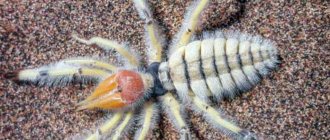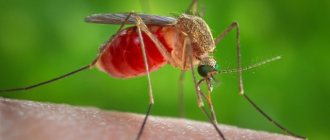Description and features
A huge number of species of various organisms inhabit the water element; most of the planet’s fauna has settled on land. But the world, rich in life, also represents an underground kingdom. And its members are not only small primitive forms: worms, arachnids, insects, their larvae, bacteria and others.
Creatures that spend their days underground also include mammals. Among these creatures one can name a mole . animal has not been studied as thoroughly as we would like. And the reason is in the characteristics of such creatures that inhabit inaccessible areas hidden from human eyes.
These representatives of the fauna are classified as members of the mole family. The physiological details of their appearance prove how well they are adapted to the unusual way of life that is inherent to them, that is, underground. Here, first of all, it would be nice to mention their paws, without which it would be impossible for such creatures to survive in their usual environment.
Moles are not rodents; they dig the ground not with their teeth, but actively using their forelimbs. Therefore, their rounded hands, reminiscent of oars, are quite wide, with palms turned outward. And their widely spaced fingers are equipped with powerful, large claws.
The hind legs are not endowed with enormous strength and dexterity, but mainly serve to rake out soil previously loosened by the forelimbs.
Other features of appearance (they, like those already mentioned, are clearly visible in the photo of the mole ) include: an elongated muzzle, an elongated nose, a short, thin tail. The body of such animals is covered with short fur, so that its length does not interfere with the movement of these creatures along underground paths.
In addition, their fur grows in an unusual way - upward. It is endowed with the property of bending in any direction, which again facilitates unhindered underground movement. The hair tone is usually gray or black-brown.
But there are also exceptions, depending on the variety and some structural features. Albinos are also found among such animals, although very rarely.
Describing the senses of these creatures, it should be noted that these animals are almost blind. Actually, they don’t need good vision. And the small beady eyes of moles are only capable of distinguishing darkness from light.
Their structure is very primitive and unlike the organs of vision of most mammals, and some constituent parts, for example, retinas and lenses, are completely absent. But the eyes of these underground creatures, almost indistinguishable to prying eyes in the thick fur of the animals, are perfectly protected, covered from the ingress of soil particles into them by mobile, often completely retractable eyelids. But the sense of smell and hearing in moles is well developed. And small ears are also protected by skin folds.
In general, the underground world of mammals is very diverse, because quite a few animals that are similar to moles in that they prefer to hide from the dangers of life and the vicissitudes of the climate underground. These include, for example, the shrew - a creature with an elongated muzzle, covered with velvety short fur.
And not all of the mentioned representatives of the animal kingdom necessarily live exclusively and only underground. Yes, they are not there all the time of their existence, but rather they look for shelter by digging holes or finding shelters made by someone else.
Among these are muskrats, which are considered close relatives of moles and are classified in the same family. They are also drawn underground, although they spend half of their existence in water. Living in burrows are, in addition, the well-known foxes and badgers, as well as chipmunks, wild rabbits, a huge number of rodents and many others.
Types of moles
In total, there are about four dozen varieties of moles on Earth. The most common and widely known of them is the common mole, which is also called the European mole. These animals, as you might guess, are found in Europe and are distributed all the way to Western Siberia. They usually weigh no more than 100 g and have a body length of up to 16 cm.
Among other members of the family, some deserve special mention.
1. The Japanese shrew mole is a small animal, only about 7 cm long. In some cases, it can be seen among the tall grass in the meadows and forests of the islands of Tsushima, Dogo, Shikoku and Honshu. The long proboscis of such creatures, located on the elongated muzzle, is equipped with sensitive tactile hairs.
The tail is of considerable size, fluffy, and quite often accumulates quite large reserves of fat. Sometimes it happens that such animals crawl to the surface of the earth in search of food and even climb low bushes and trees.
2. American shrew mole . Such animals are common in some states of Canada and the USA. Their fur is soft, thick, and can be black with a bluish tint or have a dark gray hue. Representatives of this species are similar in many ways to members of the species just described, so much so that some zoologists are inclined to consider them the closest relatives.
Such creatures are approximately the same in size. In addition, the length of the body of American individuals is greatly complemented by a rather large tail. Such animals can also climb bushes and swim well.
3. Siberian mole , also called Altai mole. In many ways it is similar to European moles, however, its female and male representatives, unlike the latter, are significantly different in appearance. And above all in size.
These are quite large moles. Males from the Siberian variety can have a length of almost 20 cm and reach a weight of 145 g, females are much smaller. The fur of the animals has dark shades: brown, brown, black, gray-lead.
The body of such creatures is round, massive, and the legs are short. An oblong proboscis stands out on the narrowed muzzle. Such animals do not have ear shells at all.
4. Caucasian mole . It is also similar to individuals of the European variety, but individual elements of structure and appearance are very unique. Their eyes are even more underdeveloped than those of other moles. They are practically invisible and hidden under a thin layer of skin.
Juveniles of this species boast rich, shiny black fur. However, with age, its shades fade.
5. Mogera Ussuri is a very interesting species, the representatives of which are famous for their size, being, according to these indicators, record holders among all members of the mole family. The body weight of male specimens can reach 300 g or more, and the body size is about 210 mm.
Such animals are common in Korea and China. In Russian open spaces they are found in the Far East and in the regions adjacent to this region. The eyes and ears of such creatures are underdeveloped. Painted in brown tones with the addition of brown and gray tints, in some cases with a metallic tint. This species of living beings has been declared rare, and active measures are being taken to protect it.
6. The star-nosed mole is a North American resident, also called the star-nosed mole. The nose of such animals has a very unique, truly peculiar structure and consists of a large number of small tentacles equipped with many receptors.
All these devices are designed for successful search for food. Otherwise, such animals are similar to European moles in all details except for the unusually long tail. These creatures love water very much, swim beautifully and dive expertly.
Lifestyle and habitat
To better understand what kind of animal a mole is , you should describe in detail the life of these interesting creatures. As is already clear, their existence takes place underground. But not all types of soil are suitable for them. Therefore, these representatives of the fauna prefer to inhabit damp areas with fairly loose soil.
On the other hand, they simply could not cope, because they spend their lives endlessly digging numerous underground networks of passages and labyrinths. People rarely see such animals, since moles are extremely rare on the surface.
However, sometimes you can see characteristic earthen mounds in fields and meadows. This is the result of the life activity of such creatures. After all, moles prefer to throw excess soil onto the surface.
Due to the unique nature of their existence, moles are included in the list of very dangerous and daring agricultural pests. Underground, they disturb crops and break plant roots. But we should not forget that at the same time the animals loosen the soil, from which the oxygen exchange in it is greatly activated, which promotes the vital activity of the same plants and beneficial microorganisms.
For moles there is not much difference: day on earth or night, which is not surprising, given their blindness and lifestyle. These animals have completely different biorhythms.
They stay awake for up to four hours, then rest, then again indulge in activity for a similar period of time. It should be noted that such animals are not able to sleep for more than three hours.
You can’t travel much underground, and therefore these animals don’t make large movements. The only exception is the unusually hot summer periods. At this time, moles tend to move closer to rivers and other fresh water bodies so that their bodies do not lack moisture.
The mole is not a social lover. And this applies to all living beings, and to relatives in particular. Such animals are inveterate loners, in addition, they are great owners. Each of them strives to take possession of an individual plot of land, the rights to which they certainly want to protect, and very zealously.
Moles are not known for their flexible nature. And sometimes they are extremely aggressive, and this applies not only to males, but also to the female half. To imagine the population density of moles, we note that on an area of 1 hectare, from several specimens of such animals to three dozen can settle.
If moles happen to be neighbors, they try not to intersect with each other. Each of the animals has its own underground passages, where they tend to stay, without maintaining relationships with their relatives. If these creatures accidentally collide, they try to disperse as quickly as possible without creating problems for themselves.
Although each of them in their hearts would gladly occupy the territory of the other. Therefore, if a neighbor dies, those living in the territories adjacent to him will find out about it quite quickly. And those of their moles that turn out to be quicker seize the vacant living space, but in some cases divide it between the applicants.
How do these animals distinguish occupied areas from free ones? These creatures leave marks on their properties, and the substance they secrete contains a very odorous secretion.
During winter periods, moles do not hibernate. They prepare for cold weather in a different way: they dig deep holes and accumulate fat and food reserves. Only underground are these animals safe. When they go outside, they become completely defenseless. Therefore, they can be successfully attacked by martens, eagle owls, foxes and other predators.
Economic importance
Moles are very numerous in their habitats and are not included in the list of protected species. Velvety, durable mole skins were mined on an industrial scale in the old days. However, today the mole has completely lost its commercial significance. However, moles are considered useful animals that exterminate pests and improve soil structure. At the same time, moles not only loosen and fertilize the soil, but also perform drainage with their numerous tunnels.
With all this, the mole is considered a pest of gardens and vegetable gardens. The fact is that with their moves, moles damage the root system of cultivated plants, as a result of which the latter often die. Moles, moreover, eat earthworms, which gardeners value so much.
Nutrition
These creatures belong to the order of insectivores, therefore, their diet corresponds to this. A soil animal, the mole mainly obtains food for itself in feeding passages, that is, underground tunnels dug by it, with the help of its nose, which perfectly distinguishes odors.
It eats slugs, beetle larvae, and earthworms. But these underground inhabitants also hunt when they come to the surface. There they catch beetles, ants, frogs, and small rodents. These animals, contrary to some unreliable rumors, do not consume plant food at all. The food metabolism of moles is quite intense, and they require approximately 150 g of animal food per day.
By the end of autumn, in preparation for the cold, such animals begin to make winter supplies for themselves, immobilizing their prey through a bite. Such pantries, usually located in close proximity to the nest, contain more than 2 kg of food.
Behavior
Moles spend almost their entire lives underground, in their tunnels located at various depths. Mole tunnels are divided into two types: feeding and living. Residential passages are used to move from the nest to feeding areas or to water. Feeding passages are essentially traps into which underground invertebrates fall.
During one night, a mole is able to build a tunnel up to 50 m long. Moles make their nest at a depth of 1.5 - 2 meters in a fairly protected place, for example, under stones, stumps, tree roots or under human buildings. Residential passages are connected to subsurface feeding passages using inclined drifts. All underground tunnels of moles have a diameter of 5 to 5.5 cm.
Moles lead an active lifestyle throughout the year. Even in winter, they make tunnels in the snow and hunt for invertebrates there. At this time, they also dig into the soil below the freezing depth. In cold winters with little snow, when the soil freezes very deeply, many moles die from lack of food. Severe droughts are also unfavorable for these animals.
We suggest you familiarize yourself with: Rhinoceros beetle photo description report video nutrition reproduction information message
Adult individuals live permanently in their areas and even when resettled or driven out, they often return. The young generation, settling from the parent site, can move to a distance of about 2 km.

